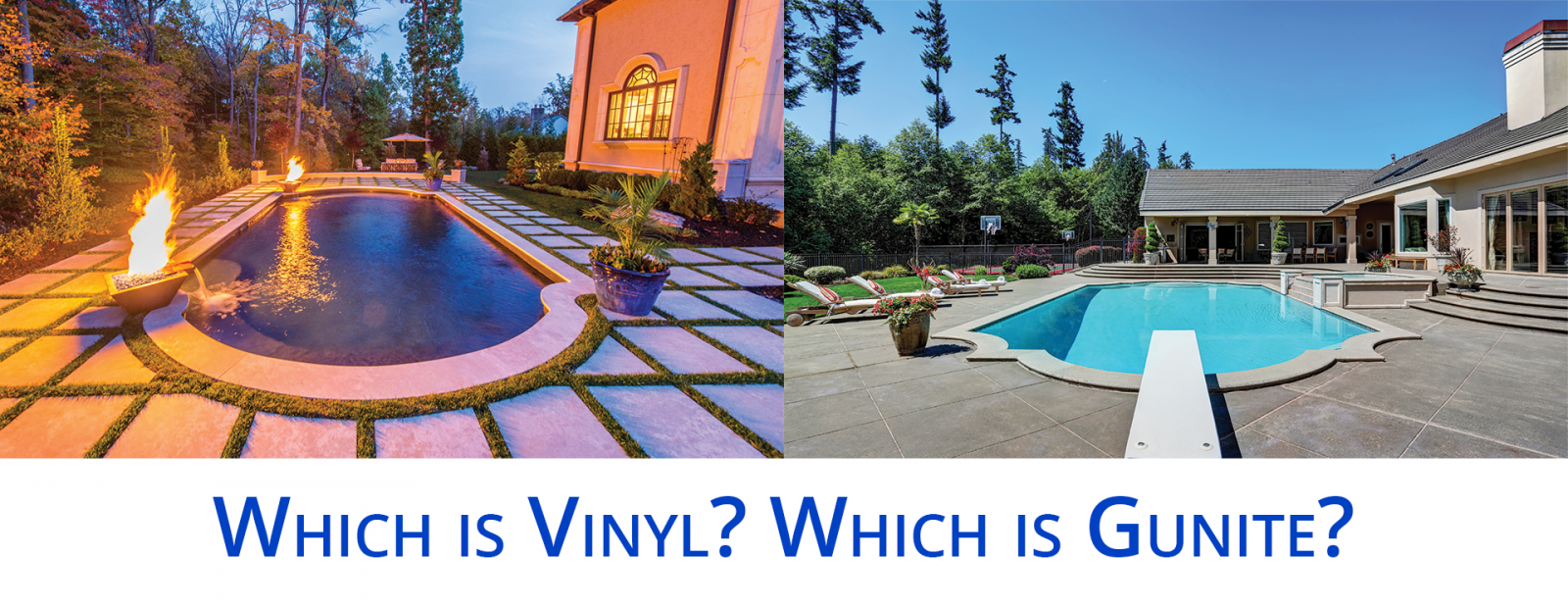There are myths for all topics. Some homeowners think of a gunite pool as a more luxurious pool choice for their home. Not only are gunite pools more expensive initially and for renovations, but here are key factors to consider.
Build time – Now this can vary widely from contractor to contractor, but concrete pools take longer to build than vinyl liner pools.
Plaster – Gunite pools are constructed using plaster, often a low grade plaster. In the past plasters contained asbestos allowing the finish to be smoother. Today’s plasters are asbestos free which has resulted in a rougher finish than a gunite pool you may recall swimming in as a child. Gunite pools will require replastering, and there is never a warranty on plaster. Vinyl liner pools do come with a warranty.
Surface is rough – All you need to do is stick your hand in a concrete pool then a vinyl pool to feel the difference yourself. The smoothest concrete pool surface is a cheese grader compared to vinyl. It is not uncommon to scrape your feet, knees, elbows, etc. in a gunite pool.
Concrete cracks – Cracks in concrete are to be expected and are considered a “feature” of concrete. So we end up with cracks where we don’t want them. Out west where the soil has less clay concrete cracks less – in pools too! But here in the north east with the freeze thaw cycles and clay content you can expect a crack failure to develop in your pool.
Discoloration – Because plaster is porous, it stains easily. This can happen because water-line tile is not installed, there were pauses while the pool was being filled, the plaster was incorrectly troweled, or the water chemistry is unbalanced.
Spalling – A spall is a thin layer (1/8 inch or less) of the plaster surface that flakes or peels off, usually from the bottom side. This happens due to over-troweling the surface, improperly timed troweling, or adding too much water while troweling.
Incompatible with salt – Gunite pools are not compatible with salt. Salt eats away at a concrete pool in much the same way it does a concrete driveway. While this may take longer because it is dissolved, it still happens. Another reason salt eats the surface is because it is abrasive and with the water moving around so often that shell wears faster with salt in the water.
Require More Maintenance – Because gunite pools often have an uneven texture, they provide the ideal surface for algae to grow, which means that gunite pool owners must become diligent about testing and maintaining the chemical balance of the water–more so than vinyl liner pool owners. Gunite pool owners must test the pH balance and chlorine levels of the water at least two to three times a week. If your pool has a high pH and a low chlorine level, algae can begin to bloom. In addition, gunite pool owners must brush or scrub the walls of the pool on a regular basis to prevent dirt and other debris from settling in the wall’s pores, which can encourage algae growth as well.
Surface is a wear item, you need to replace it – Whether or not you have salt in your water a concrete pool will need to be resurfaced. At best 7-10 years is all that can be expected. Gunite pool renovations are more expensive, time consuming, and messier than a vinyl renovation.

